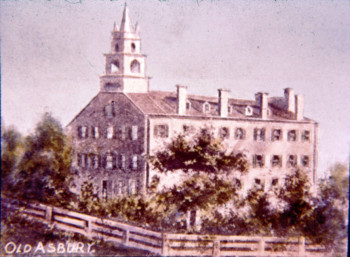DePauw University was founded in 1837 by the Methodist Church. Originally called Indiana Asbury University in honor of Francis Asbury, the first American bishop of the Methodist Episcopal Church, the school was envisioned by its founders to be an ecumenical institution of national stature that would be “conducted on the most liberal principles, accessible to all religious denominations, and designed for the benefit of our citizens in general.”
Residents of Greencastle, Indiana, were eager for the university to be located in their frontier village and raised $25,000 – then a huge sum – to entice the founders. The Indiana General Assembly granted a charter establishing the university on January 10, 1837, and the cornerstone of the first building was laid later that year.
The school began with one professor and five students. Three years later, Matthew Simpson, a friend and counselor of Abraham Lincoln, was inaugurated as the first president and the first class was graduated.
Indiana Asbury grew quickly, although many men left the university to fight for either North or South during the Civil War. Women were admitted in 1867.
When the university experienced financial difficulties in the 1860s, its leaders turned to businessman and philanthropist Washington C. DePauw, one of the richest men in Indiana and a devout Methodist who had contributed money to Indiana Asbury. DePauw had made arrangements in his will for a Methodist university to be established after his death. Urged by Indiana Asbury trustees to divert his bequest to the school, DePauw did so and the trustees changed the school’s name to DePauw University.
DePauw is an innovator and host to a number of regional and national firsts. DePauw has Indiana's first Phi Beta Kappa chapter. It is home to the first sorority in the nation, Kappa Alpha Theta (1870) and the Alpha chapter of Alpha Chi Omega. The journalistic honorary, Sigma Delta Chi, which later became the Society of Professional Journalists, was founded by DePauw students. And DePauw is home to the first collegiate FM radio station in the country, first hitting the airwaves in 1949. And lastly, The DePauw, DePauw's student-managed newspaper, is the oldest college newspaper in the state.